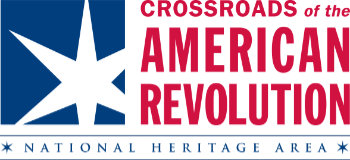Biography People
Richard Stockton Full Biography
I was born October 1, 1730 in Princeton on land my grandfather had purchased from William Penn in 1701. I was well educated as a youth and graduated from the College of New Jersey in Newark in 1748, before my family donated money and land to move the college to Princeton in 1752. I was admitted to the bar in 1754, opened a law office in Princeton, and became known as a very eloquent lawyer. In 1757 I married Annis Boudinot and rebuilt our home after a fire in 1758. Annis named our home Morven, Gaelic for big mountain.
During the Stamp Act controversy I spent fifteen months travelling in England, Scotland, and Ireland. I met with Reverend John Witherspoon in Scotland and, acting as a trustee of the college, convinced him to accept the presidency of the College of New Jersey. I attended royal functions and impressed King George III with a speech acknowledging the repeal of the hated Stamp Act. I advised many prominent people that the colonies would steadfastly oppose taxation without representation in Parliament. I escaped an early death on two occasions. With my small sword, I fought off a thief who attacked me in Scotland and I missed the sailing of a ship, on which I had booked passage to Ireland, that sank in a storm killing everyone aboard.
Returning to New Jersey, in 1768 I began service on the Governor’s Council and was a judge on the Supreme Court in 1774. Not wanting to see war break out between England and her colonies, I sent a plan for American self-government to Lord Dartmouth, Secretary for the Colonies. My plan called for the colonies to be independent of Parliament, but to maintain allegiance to the Crown. I warned Dartmouth that if something like this was not done that an awful war was inevitable. When my efforts failed I decided to support my native country so I resigned my royal offices and was elected to the Continental Congress in June 1776.
On July 1 my good friend John Witherspoon and I set off to attend Congress in Philadelphia. We arrived there soaking wet after the long, muddy ride from Princeton that included a violent thunderstorm. We arrived later than expected and after John Adams had concluded a speech in favor of independence. I insisted that Adams repeat his message and then listed to the debate. Strongly in favor of independence I later said that Adams was, “the Atlas of the hour, the man to whom the country is most indebted for the great measure of independency. He who sustained the debate, and by the force of reasoning demonstrated not only the justice, but the expediency of the measure.”
In August I unexpectedly received the same number of votes for governor of New Jersey as William Livingston. But, I really did not want to serve in high public office in the State, preferring to work in the Continental Congress. I was one of the few signers of the Declaration of Independence who visited the army to see first-hand the conditions the men were enduring. On September 26 fellow signer George Clymer of Pennsylvania and I set out on a two month journey to inspect our northern army. We travelled to Albany, Saratoga, and Fort Ticonderoga and everywhere found the army in dire need of all necessities, with no prospects that their needs could be satisfied. I wrote to the New Jersey legislature to do everything possible to supply our troops with shoes, stockings, and other clothing.
When the British invaded New Jersey in November, I hurried home and moved my family to the home of a friend thirty miles from Princeton. On November 30, I was dragged from bed in the middle of the night by Loyalists and, clad in only my nightshirt and breeches, was marched away. They turned me over to the British who jailed me first at Perth Amboy and then in New York. I was put in irons and starved and shivered in the cold winter weather. I was finally given a parole by General Howe that required me not to participate in the war effort. People at the time, and my later biographers, debated whether I actually signed an amnesty agreement and swore allegiance to the King. I returned home sick and near death to find that my home had been plundered by the British army. My furniture, clothing, writings, and library were burnt and my farm animals and produce carried away.
I slowly regained my health over the next two years, but then developed cancer and died on February 28, 1781, several years before my county won independence. After a service in Nassau Hall, although no longer a Quaker, I was buried at the Stony Brook Quaker Cemetery in Princeton among my Quaker ancestors.
FURTHER SOURCES
The website of the Society of the Descendants of Signers of the Declaration of Independence contains a biographical sketch written by John C. and Kathryn Glynn, authors of a 2006 biography entitled His Sacred Honor Judge Richard Stockton: A Signer of the Declaration of Independence. This web page is located at http://www.dsdi1776.com/signers-by-state/richard-stockton.
There are also a number of collective biographies of the signers of the Declaration. Several of the more recent ones include:
Barthelmas, Della Gray, The Signers of the Declaration of Independence: A Biographical and Genealogical Reference. (Jefferson, N.C.: McFarland, 1997).
Kiernan, Denise and Joseph D’Agnese. Signing Their Lives Away: The Fame and Misfortune of the men who signed the Declaration of Independence. (Philadelphia: Quirk Book, 2009),
Ferris, Robert G. and Richard E. Morris. The Signers of the Declaration of Independence. (Flagstaff, AZ: Ineterpretive Publications, 2001).
Cunningham, John T. New Jersey’s Five Who Signed. (Trenton: New Jersey Historical Commission, 1975).
